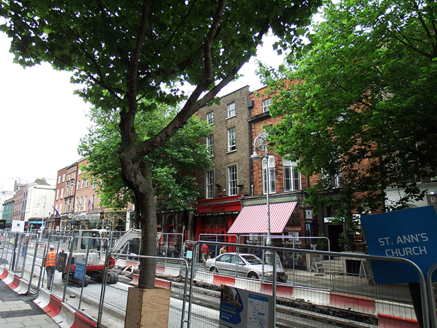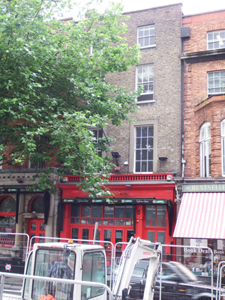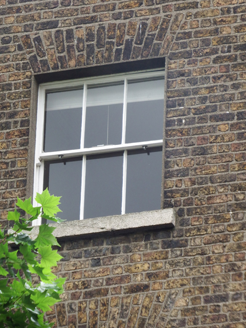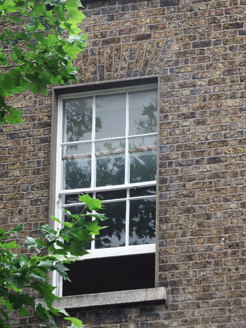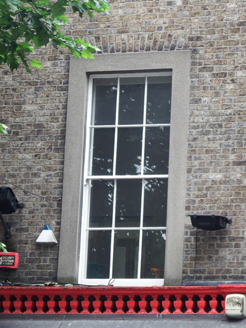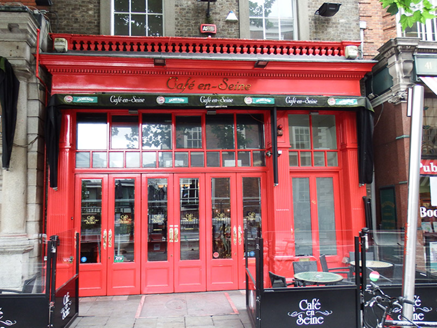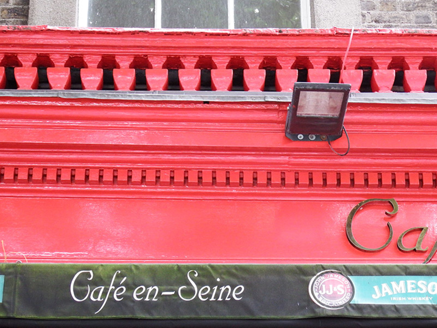Survey Data
Reg No
50100121
Rating
Regional
Categories of Special Interest
Architectural, Artistic
Previous Name
Mssrs. Pohlmann, Piano Manufacturers
Original Use
House
In Use As
Shop/retail outlet
Date
1740 - 1885
Coordinates
316039, 233663
Date Recorded
26/07/2016
Date Updated
--/--/--
Description
Attached two-bay four-storey former house, built c. 1750. Ground floor altered c. 1881. Now in use as restaurant with offices above, with largely recent timber shopfront to ground floor. M-profile slate roof, hipped to north end and gabled to south, having brick parapet with masonry coping, two chimneystacks to south, and concealed rainwater goods. Flemish bond buff brick walling to upper floors. Square-headed window openings, diminishing in height to upper floors, with brick voussoirs, projecting masonry sills, and having rendered surrounds to first floor openings. Six-over-six pane timber sliding sash windows to middle floors, with ogee horns, and three-over-three pane to top floor; timber sash windows to rear. Shopfront has plain fascia with dentillated lead-capped moulded cornice, balustraded blocking course above, and otherwise replacement fittings.
Appraisal
This building, dating from the mid-eighteenth century, now amalgamated with No. 39 and in use as a restaurant. The upper floors retain the original Georgian proportions and fenestration, but the ground floor was altered about 1881 to design by Albert Murray for Messrs Pohlmann, piano manufacturers. Further alterations were made more recently. Dawson Street was the principal thoroughfare of a suburb laid out in 1707 by Joshua Dawson and on which he built his own house (now the Mansion House). It was once one of Dublin's premier residential addresses, before gradually changing to commercial use in the nineteenth century. The street is characterized by a range of noteworthy Georgian and early Victorian buildings, with some modern office blocks. No. 40 makes a contribution to the vibrancy and architectural character of this historic street, diversifying the well-preserved range of buildings between St. Stephen's Green and South Anne Street.
